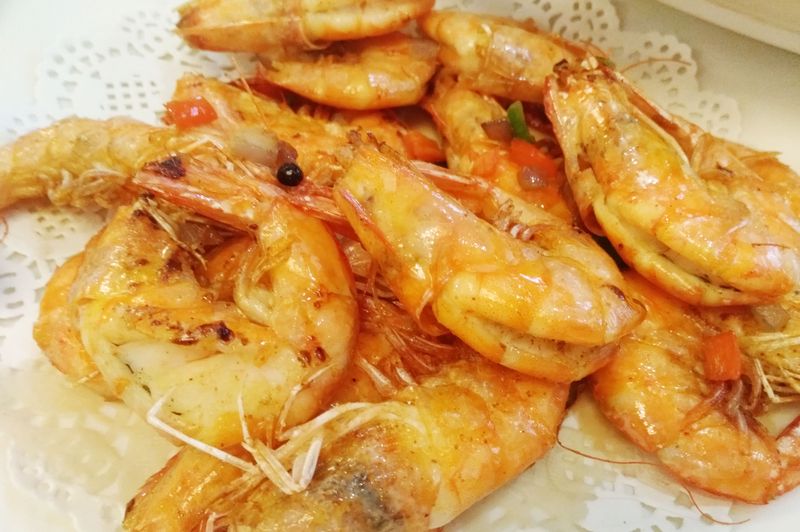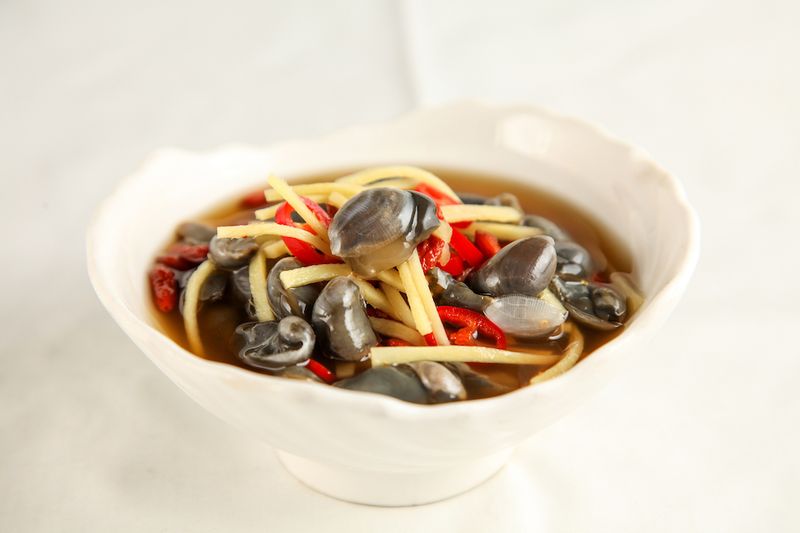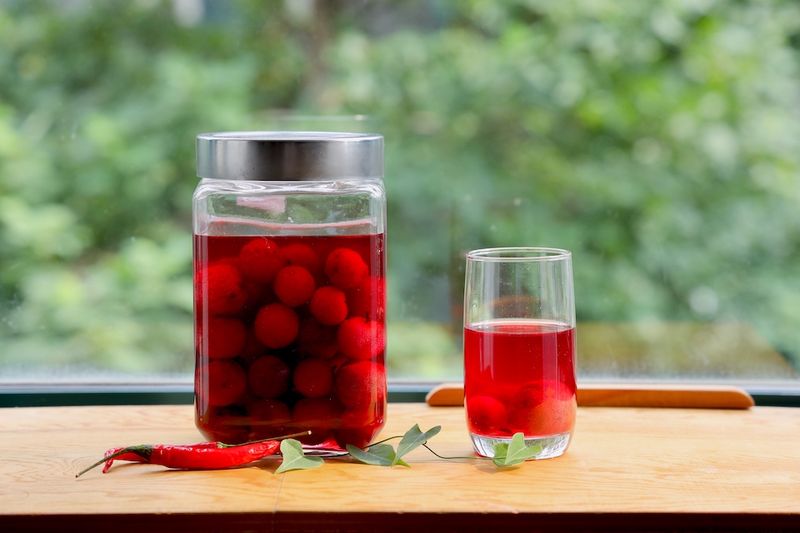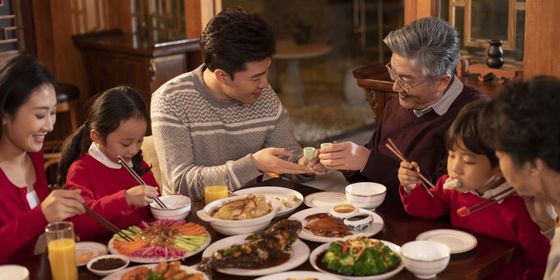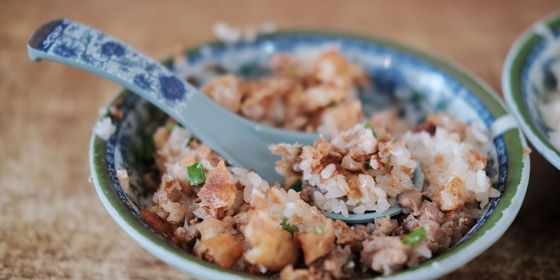Minute snails, stinky water melon, and "ghost buns," are just some of the tasty treats in this seaside Chinese city
Olympic shooter Yang Qian and swimmer Wang Shun might have wowed the world with their gold medals in Tokyo this year, but for viewers back in China, they are almost as famous for their remarks about Chinese cuisine on the world stage—specifically, the cuisine of their shared hometown, Ningbo.
“I want to eat my mother’s cooking…especially braised prawns (油焖大虾),” Yang said at the press conference after winning the Games’ first gold medal in the 10-meter rifle competition (a video showed her mother shouting at the TV “I’ll make all the braised prawns you want!” after Yang won her second gold days later). Wang’s favorite is his grandmother’s ribbon fish braised in soy sauce (红烧带鱼), his mother revealed after Wang broke the Asia record in the 200 meter medley. Even Hong Kong director Stephen Chow, the king of Chinese comedy films, has Ningbo heritage and is known for his love of yellowtail fish noodles (黄鱼面).
Located in northern Zhejiang province next to the East China Sea, Ningbo, literally “calm waves," was known as Mingzhou (明州) for most of Chinese history. It was one of the entrepots of the Maritime Silk Road, sending and receiving trade through the Indian Ocean, as far as Africa. Sea and seafood are at the center of Ningbo history, culture, and even language—“a dead crab” (死蟹一只) is Ningbo slang for something hopeless, and the locals love their yellowtail fish (黄鱼) so much that it is also a slang term for a person and for objects like a tricycle and a gold bar in the local dialect.
Ningboese treat seafood with care—preserving the original flavor and amplifying its freshness through yellow rice wine, used in much of Zhejiang cuisine. Many of the signature dishes of this steamy city are associated with the humid summer climate, and nostalgic memories of neighbors spending time together in the summer evenings in Ningbo's seafood markets and streets. Other Ningbo specialties though, may seem a bit strange to outsiders. From “tipsy” snails and “stinky melon” to jelly flavored by “wild ghosts,” here are some unique Ningbo delicacies that recall the taste of summer:
Ningbo Styled Seafood Noodles
Ming dynasty (1368 – 1644) emperor Zhu Yuanzhang (朱元璋) gave Ningbo its current name in 1381, hoping to “settle the sea and calm the waves (海定则波宁).” Ironically, summer in Ningbo means frequent typhoons, but locals believe seafood can calm the stomach.
Seafood noodles are the quintessential breakfast (and lunch and dinner) dish, where one can choose from a wide variety of sea delicacies—swimming crab, razor clam, tofu fish, and mantis shrimp fresh from the ocean to the seafood stalls every morning. The noodles are typically stir-fried with ginger and garlic, with fish bone soup stock and seafood added, and the noodles slowly absorbing every taste. An ingredient not to be forgotten is yellow wine.
The Ningboese preference for this ancient liquor could be traced back to the Hemudu Culture that existed in the region circa 5,000 BCE. Archeologists have found rice grains alongside wine vessels at this site, indicating people in this area already knew how to cultivate rice and brew rice wine over 7,000 years ago.
A bowl of seafood noodles is a feast for the eyes, adding vegetables and tomatoes making it even more colorful. The fun of having seafood noodles comes from treasure hunting for the ingredients with chopsticks. Occasionally, one may even find some pleasant surprises with extra garnishes added by the generous stall owners. One typical Ningbo summer pleasure is to sit out in the early morning sun to savor fresh seafood noodles with a beer for cooling off.
Mud Snails
Ningboese are also emotionally attached to tiny sea creatures: “Buddha's hand snails”(佛手螺), “blood clams” (毛蚶), and a minute mussel called “sea melon seed” (海瓜子). Unlike big expensive seafood, these are tiny and therefore cheaper, accessible to ordinary people. The mud snail (泥螺) is one classic. According to The Compendium of Materia Medica (《本草纲目》), a Ming dynasty book about natural medicine, snails could tonify the liver and kidneys, moisten the lungs, and improve the eyesight.
Mud snails burrow into mud on the beach to stay cool, only coming out in the evening. In the past, people would carry a bucket and an oil lamp to handpick the snails at night. Later, locals invented a wooden tool known as the “mud horse.” This is a thin wooden raft they could ride over the beach to collect snails without getting their legs stuck in the mud.
Recipe books from the Ming and Qing (1616 – 1911) dynasties list various ways to pickle snails: using vinegar, wine, and sugar. Ningboese, of course, prefer yellow wine. According to Chinese medicine, warm yellow wine balances the coldness of snails. Moreover, the wine makes the snail meat more flavorful and crunchy.
To eat the mud snail, gently sip from the shell, and the snail meat “slips” instantly into the stomach with a delicious aftertaste lingering in the mouth. Amusingly, locals call mud snails “rice hammer (下饭榔头),” as it goes perfectly with rice and could make a plain meal go down more easily. Not surprisingly, when Ningboese go to other places, they would carry a few bottles of pickled snails for comfort.
Stinky Winter Melon is a Ningbo Local Cuisine Secret
For visitors to Ningbo, there is nothing more jaw-dropping than the “stinky white gourd” (臭冬瓜). But for locals, it is the best-kept secret of their hometown. When women make fun of men in Ningbo, they would say they prefer stinky white gourds to stinky men.
To make this, cut a white gourd (also known as a winter melon or winter gourd) into chunks and cook them. Once they’ve cooled down, put the melon chunks inside an earthen jar, add some salt and "stinky" soup made from pickled amaranth stem, seal the jar tight with stones and store it in the shade for a few weeks. This unusual flavor was accidentally discovered by fishermen who stored white gourds at home while they were away for months at sea. Since they didn’t want to throw bad gourds away, they tried to eat it with some old wine and sesame oil. To their surprise, it was very tasty.
On a lazy summer morning, you can take out some cool slices of white gourd from the fridge, add a few drops of sesame oil, and enjoy it with a breakfast of congee. According to traditional Chinese medicine, white gourd clears the heat, detoxifies the body, and even soothes the mood on a hot day.
Yangmei Liquor
When Ningboese feel that a heatstroke is imminent in the hot summer, they drink yangmei wine (杨梅酒) as a quick cure. Ningbo is known as “the Kingdom of Yangmei,” after the purplish berry that grows in the area—pollen from yangmei trees has been found in the Hemudu site. The Song dynasty poet and gourmet Su Dongpo once wrote, “Neither lychee nor grape can compare with yangmei,” and in ancient China, it was named lizhu (骊珠), or “dragon jewels,” indicating it was precious.
In the early summer in Ningbo, the mountains are full of fruiting yangmei trees and even the air smells sweet and sour. Ningboese like to preserve fresh, juicy yangmei into sorghum wine, and the chemistry results in a very flavorful liquor. In the old days, every family would store a big bottle of yangmei wine as a cure-all for summer illnesses like stomachache or heatstroke.
Mulian Jelly and "Ghost Buns"
The Hemudu site contains China’s earliest evidence of rice cultivation. Ningboese turned this common grain into one strange invention—“rice dust juice balls." This is made by burning the stalks of the rice plant to ash, adding some water, running the mixture through a filter to create “dust juice,” and working the liquid into balls of sticky rice dough. Believe it or not, these rice balls taste fresh, with a sweet earthy fragrance. Naughty children even play ping-pong with these balls, as they are very elastic and can really bounce. According to local elders, rice dust balls are best made with early rice stalks, which are planted in spring and mature in July.
When it comes to dessert, mulian jelly (木莲冻) is a precious childhood memory of every Ningboese. It is made from manglietia fruit, which has an unusual nickname, “ghost buns (鬼馒头)”. As this vine likes to climb on crumbling walls in the wild, it is associated with graves, and its bun-like fruits are said to be food for wild ghosts. Still, Chinese medicine values this nourishing fruit, as they are believed to have special powers from the underworld.
In the old days, neighbors in Ningbo would make the jelly and share it together. They would fill a cloth bag with the seeds of the fruit and gently squeeze the pectin from these seeds into a washbasin. Slowly, the washbasin fills with crystal-like jelly. They then spray fresh mint water and brown sugar on the jelly to give it a sweet, cool taste. In the days before refrigeration, people would store the jelly in cold water.
When children woke up from their afternoon nap, they would sit out on a bamboo bench with a bowl of mulian jelly in their hands while enjoying the cool breeze from the alleyway. A scoop of mulian jelly easily slides down the throat almost before you can taste it. Mulian jelly is often sold by older women along the streets. When one hands them the money, they would stop their pushcart, roll back the cloth covering the washbasin and scoop the cool jelly into a bowl. Then, they take a big plastic bottle with small holes to spray some fresh mint water over the jelly and hands it to the customer with the simple happiness of summer







